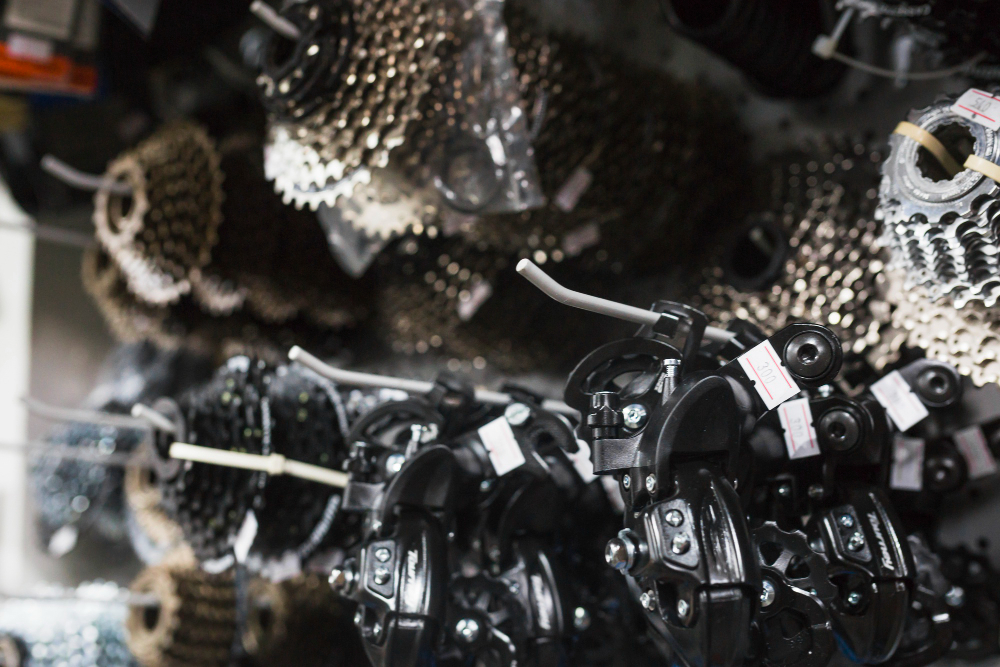The success of any structural project largely depends on the quality and durability of the materials used in its construction. Among the most commonly used materials in structural projects is stainless steel, particularly grade 304. This material is characterized by high corrosion resistance, mechanical properties, and appearance. However, to optimize the use of these properties in structural projects, the appropriate welding rod has to be used. In this blog, let’s discuss how welding rod 304 stainless steel can greatly improve the lifespan and dependability of your structural applications.
Understanding Welding Rod 304 Stainless Steel
Welding rod 304 stainless steel is widely used in the welding of stainless steel structures due to its unique composition and properties. Stainless steel 304, also known as AISI 304, is an austenitic chromium-nickel alloy containing 18% chromium and 8% nickel. It is known for its good corrosion resistance, ease of fabrication, and high strength. The material’s composition not only enhances its resistance to rust and corrosion but also allows it to withstand high temperatures without losing its integrity.
Welding rod 304 is specifically designed to provide a strong bond between metal surfaces, making it an ideal choice for welding stainless steel structures. The rod itself typically contains similar alloying elements to those found in 304 stainless steel, ensuring that the weld exhibits the same desirable properties as the parent material.
Benefits of Using Welding Rod 304 Stainless Steel
- Corrosion Resistance: One of the standout features of 304 stainless steel is its remarkable resistance to corrosion. This property is especially important in structural projects exposed to harsh environmental conditions, such as coastal areas, chemical plants, and food processing facilities. Welding rod 304 provides a weld that maintains this resistance, preventing rust and other forms of corrosion from compromising the structural integrity over time. This ensures that the structural components remain robust and reliable, even when subjected to the harshest of elements.
- High Strength and Durability: The nature of 304 stainless steel coupled with the properties acquired from the welding rod gives strong welds that can support high loads and stresses. This makes it an excellent choice for structural projects where the welded joints need to endure high mechanical loads. The strength of the weld ensures that the structure will not fail under stress, which is critical for buildings, bridges, and other infrastructure projects that require long-lasting stability.
- Aesthetic Appeal: Stainless steel is also prized for its aesthetic qualities—its smooth, polished surface offers a clean and modern look that complements various architectural styles. The use of 304 stainless steel welding rods ensures that these aesthetic qualities are maintained throughout the structure. The welds are less visible, providing a seamless and uniform appearance, which is especially important in applications where appearance is a consideration, such as in commercial buildings, kitchen equipment, and public spaces.
- Easy to Weld and Fabricate: 304 stainless steel is relatively easy to weld thanks to its good ductility and thermal conductivity. The welding rod 304 stainless steel complements these properties, allowing for smooth and efficient welding processes. It is suitable for both manual and automated welding techniques, making it versatile in application. Its ease of welding reduces the risk of defects, such as cracking and distortion, ensuring that the finished welds are strong and aesthetically pleasing.
- Resistance to Oxidation: Besides the corrosion resistance, the 304 grade of stainless steel also has a good high-temperature oxidation resistance. This makes it suitable for projects exposed to higher temperatures, like the petrochemical industries or industrial ovens. The welding rod 304 stainless steel enables the welds to have their properties not to be affected by high temperatures, and therefore, the structure of the project is retained throughout its usage.
Applications of Welding Rod 304 Stainless Steel
Welding rod 304 stainless steel is used in a wide range of structural applications due to its versatile properties:
- Architectural Structures: In buildings, bridges, and commercial structures, 304 stainless steel welding rods are used to create strong, durable joints that can withstand environmental stresses. Its corrosion resistance ensures that these structures maintain their appearance and strength over time.
- Food Processing and Pharmaceutical Industries: The hygienic properties of 304 stainless steel make it an ideal choice for equipment and structures used in these industries. The welding rod 304 stainless steel ensures that the welds meet sanitary standards and resist corrosion from chemicals and cleaning agents.
- Chemical Plants: Welding rod 304 stainless steel is used for piping systems, storage tanks, and other components exposed to corrosive chemicals. The strong, durable welds provide a secure connection that withstands the aggressive environments found in these facilities.
- Marine Applications: In the marine industry, welding rod 304 stainless steel is used to make components that must resist saltwater corrosion. From shipbuilding to offshore platforms, the corrosion resistance of the welds ensures longevity and safety.
Conclusion
Welding rod 304 stainless steel is an essential tool for enhancing the durability and reliability of structural projects. Its corrosion resistance, high strength, and aesthetic appeal make it a preferred choice for various industries where harsh environmental conditions and high stress are common. By utilizing welding rod 304, engineers and contractors can ensure that their projects remain robust and visually appealing for years to come. When planning your next structural project, consider the benefits of using 304 stainless steel welding rods to achieve optimal results.


